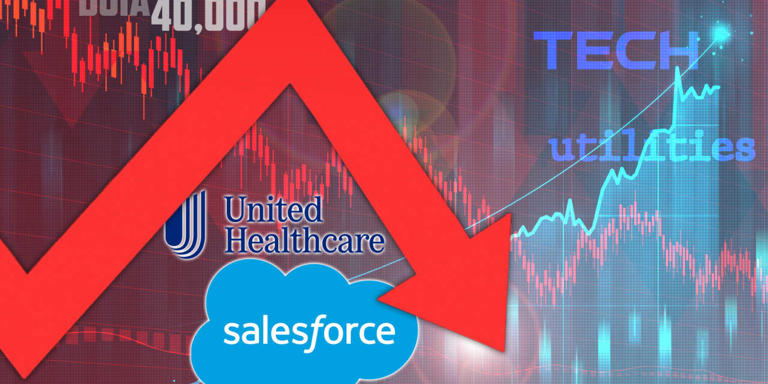The recent trajectory of the Dow Jones Industrial Average has diverged sharply from its earlier milestone of surpassing the 40,000 mark, now receding by over 3% in just two weeks. This decline marks its most substantial two-week slide in more than a month, contrasting with the broader market’s continued upward momentum.
While the Dow managed to notch a modest 2% gain in May, it notably trailed behind both the tech-centric Nasdaq Composite and the large-cap benchmark S&P 500. In fact, it lagged behind the Nasdaq Composite by its widest margin since May 2023 and underperformed the S&P 500 by the largest margin in three months, as reported by Dow Jones Market Data.
Market analysts caution against interpreting the Dow’s retreat from its record high as a definitive indicator of overall stock market performance for the month. While some of the tech behemoths have lost ground, previously overlooked sectors like utilities and small-cap stocks have made notable gains. However, analysts caution that this rotation may not necessarily reflect an ideal rebalancing of the market’s composition.
The Dow’s recent downward trend can be attributed to various factors, including disappointing quarterly earnings reports from industry giants like Salesforce Inc. The latter saw its shares plummet nearly 20% in a single day, marking its worst performance in two decades and contributing to a significant point drop in the Dow.
Additionally, a combination of robust U.S. economic data and weak government debt auctions pushed longer-term Treasury yields higher, further pressuring the stock market. Concerns have arisen that the Federal Reserve may struggle to implement interest rate cuts later this year, despite a decline in inflation.
The unique nature of the Dow as a price-weighted index adds to its susceptibility to significant price movements. Unlike the market cap-weighted S&P 500, which gives more weight to larger companies, the Dow considers only the share prices of its 30 components. Consequently, stocks with higher share prices, such as UnitedHealth Group, exert more influence over the index’s movements.
While the Dow remains a useful benchmark for the average investor, market experts argue that the broader-based S&P 500 and the Nasdaq provide a more comprehensive reflection of the stock market and the broader U.S. economy, given their broader scope.
Despite the Dow’s struggles, other sectors have shown resilience. Utilities and small-cap stocks, in particular, have emerged as top performers, outpacing other sectors. Utility stocks have seen significant gains, driven by factors such as the Fed’s interest rate cut outlook and increased demand for electricity.
However, concerns persist about the concentration of gains in tech-centric companies, signaling a need for broader market participation to sustain the rally. While certain sectors have outperformed, market breadth remains a crucial consideration for investors looking for sustained market growth.
